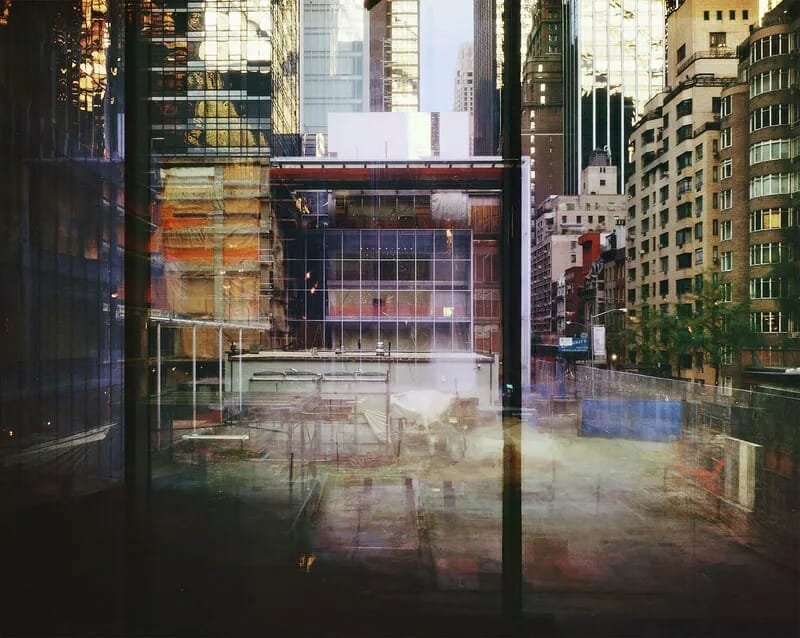Can photography measure the thickness of time ? This is the question posed by the works of German photographer Michael Wesely presented in the Stilleben exhibition.
Michael Wesely creates unique photographic images that are the result of superimposing thousands, or even millions, of individual images captured over a long exposure time.
In this way, in a single photograph, we can see everything that was in front of the lens during a given period of time. If Michael Wesely’s approach has similarities with video, which shares with it this recording of reality, it nevertheless captures the essence of a phenomenon, the very idea of a thing. The life of a bouquet of flowers, from birth to wilting, the flickering glow of candles watching over the dead in a Mexican cemetery and the path of the sun across the façade of the Museum of Modern Art as it undergoes renovation, are all condensed in these world images.

Unique, 125 × 150 cm.
©Michael Wesely, courtesy Galerie Esther Woerdehoff
This completely destabilises the division of time, because the exposure time needed to create these visual syntheses can be counted in weeks, months or years. The resulting still image doesn’t tell the whole story.
From a compositional point of view, there is another reversal. The moving elements leave less of an imprint than the fixed ones, giving rise to images that seem to quiver, as if animated by an inner mechanism.

Stilleben series, pigment print, unique
©Michael Wesely, courtesy Galerie Esther Woerdehoff
Michael Wesely’s works are living images that show us the passage of time. They have the power to take us away from the fixed image that is the hallmark of the photographic medium, to bring us into the life of the subject photographed, which then becomes palpable. Michael Wesely’s artistic approach is a return to the memorial dimension that prevailed in the early days of photography. These images are a means of recalling the life of things.
With Stilleben, the gallery is exhibiting for the first time the work of Michael Wesely, who recently joined its programme.
Michael Wesely
Photography takes us back to the past. Pictures from our early years touch us emotionally ; we feel nostalgia as they refer to a time that is no more. German artist Michael Wesely, born in 1963 in Munich, is interested in this inexistent space where the future becomes the past.
In Albert Einstein’s theory of relativity, the present does not exist as a physical value; where we believe we can sense the now, it has already slipped away. Michael Wesely creates a true archive of time over days, weeks, years, while photography is a fast art, with the capturing of a single image usually only taking a fraction of a second. In a well-defined period of time, submissive to the cycles of the earth, the tides, the sun and moon, he creates a single photograph.
Since 1988, he has been creating images with exposure times stretching up to three years, exposed on a single piece of film, with the help of cameras and large-format lenses that he makes himself.
Since 2012, long, digital exposures have given birth to thousands and even millions of individual images which, unlike a film camera, are not placed one behind the other but one above the other. The result is, just as with analogue photographs, a single image that only reveals itself to the viewer gradually.

